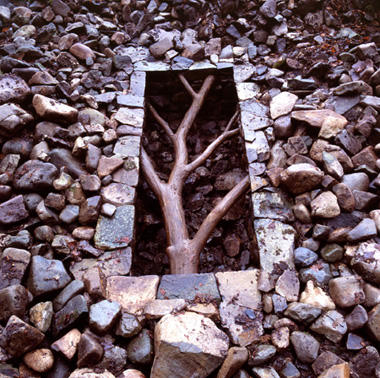
I have been interested in Andy Goldsworthy, a British sculptor and photographer, since highschool. I was given a book of his photographs, which are images of natural sculptures. The thing that really interests me about this artist is that all of his works look impossible. They are one hundred percent natural, but they all seem as though they defy nature. Everything he uses in his sculptures are found objects. They way he manipulates these objects look almost unnatural. The way he uses color and shape to make sharp, unnatural edges is beautiful and breathtaking. His precision attributes to his patience and crafstmanship. Andy Goldsworthy's artistic process is to immerse himself in nature while he is making his sculptures. He will often live out in a forest for a few days while he works. A lot of the time his sculptures take many days and require a lot of manual labor which includes melting icicles together to make intricate webs and rolling boulders to stack together like a stone monument. He has also gone out into fields before its going to snow or rain to lay on the ground while the percipitation falls all around him. Once it is over, nothing but a silhouette is left. I love the simplicity of this idea.

I also love how like nature, none of his sculptures are permanent. I've read how sometimes he will spend days working on a pieces that fall a part as soon as he is done, but he is okay with this and he moves on to his next piece. He uses no type of glue or anything man-made. He uses no tools other than his hands.

These photographs make me stop every time and think,
How did he do that?
